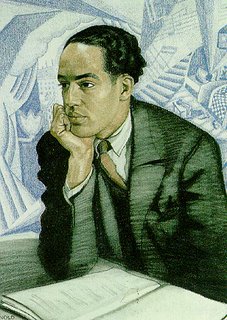
Arnold Rampersad is Hughes’ leading biographer and editor of his Collected Poems, which has a handy set of notes in the back explaining the historical context and circumstances around many of the poems. If you’d like to know more about Hughes’ life and times, Rampersad’s the place to start. His bibliographies are up to the minute and should lead you on to any further reading you'd like to pursue.
Rampersad drew some heat with the first volume of the Hughes biography by asserting that Hughes was essentially asexual, despite evidence of affairs with both men and women. He researched and revised this opinion in the second volume, conceding that the most significant relationships in Hughes’s life were with men of color. Hughes himself kept up a formidable silence about his sexual preference while he was alive. Like Pound, H.D., Stein, Loy, Moore, and even Eliot in his odd way, Hughes wasn’t exactly the model of American family values. How significant is that for understanding modernism in American poetry?
For quick and dirty online resources, try here, here, and here (the mother of all bibliographies).
Hear Hughes describe & read one of his best-known poems here.
Research on the Harlem Renaissance is in full boom. The most elegant online site I could find about it is here. Contemporaneous with the Greenwich Village scene so central to the young Moore, Williams, and Stevens, Harlem formed an alternate vision of modernism that's desribed in intricate detail in David Levering Lewis's When Harlem Was in Vogue. The links (or lack thereof) between the Harlem scene and other strands in the postwar transatlantic avant-garde are explored in Houston A. Baker's Modernism and the Harlem Renaissance.
All for today ... think of me kindly, stuck in Indianapolis, on Tuesday!





No comments:
Post a Comment